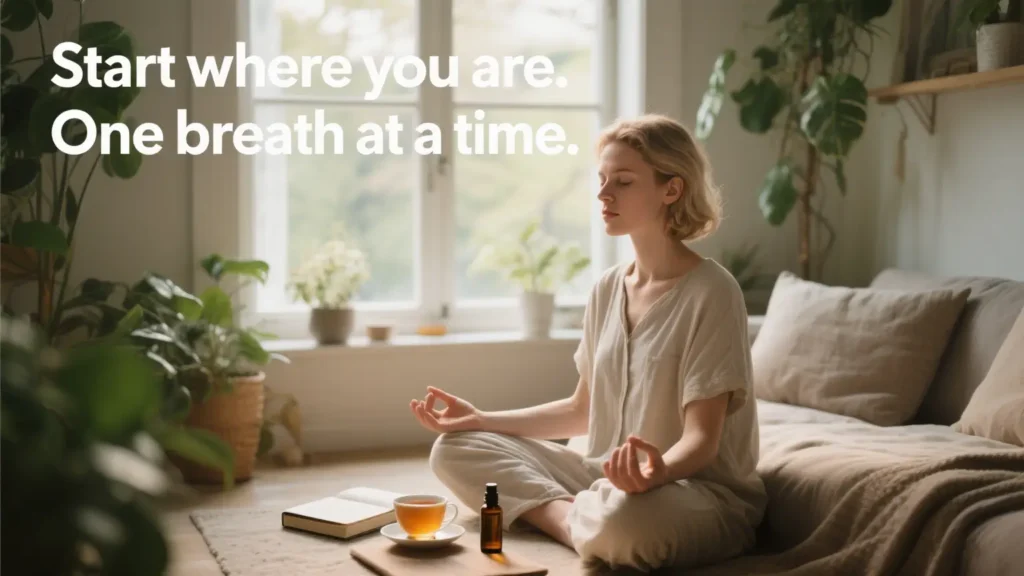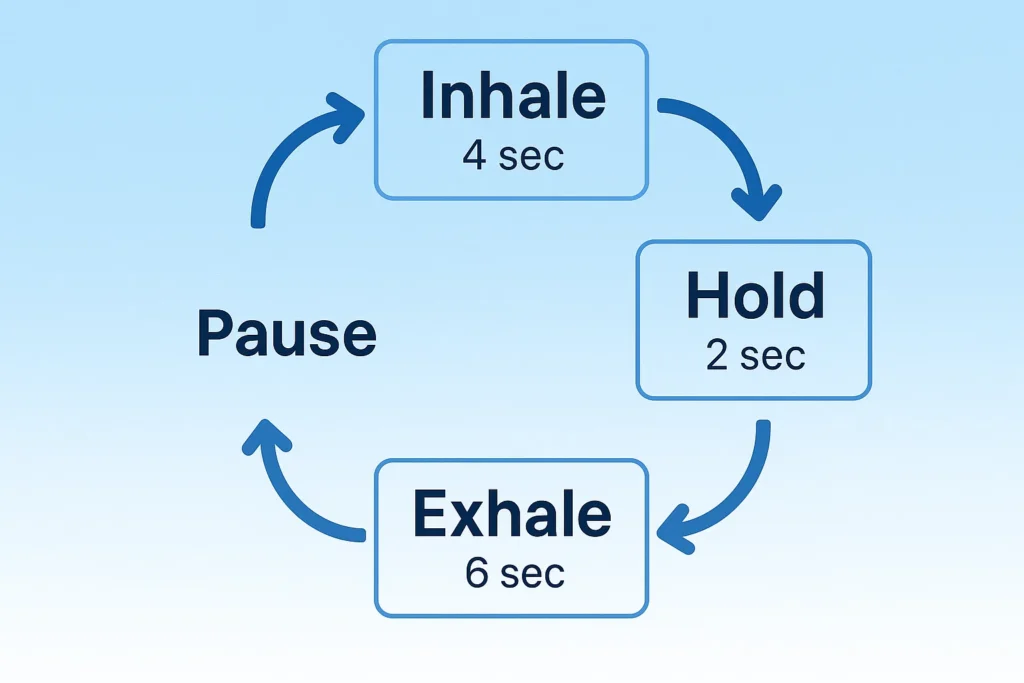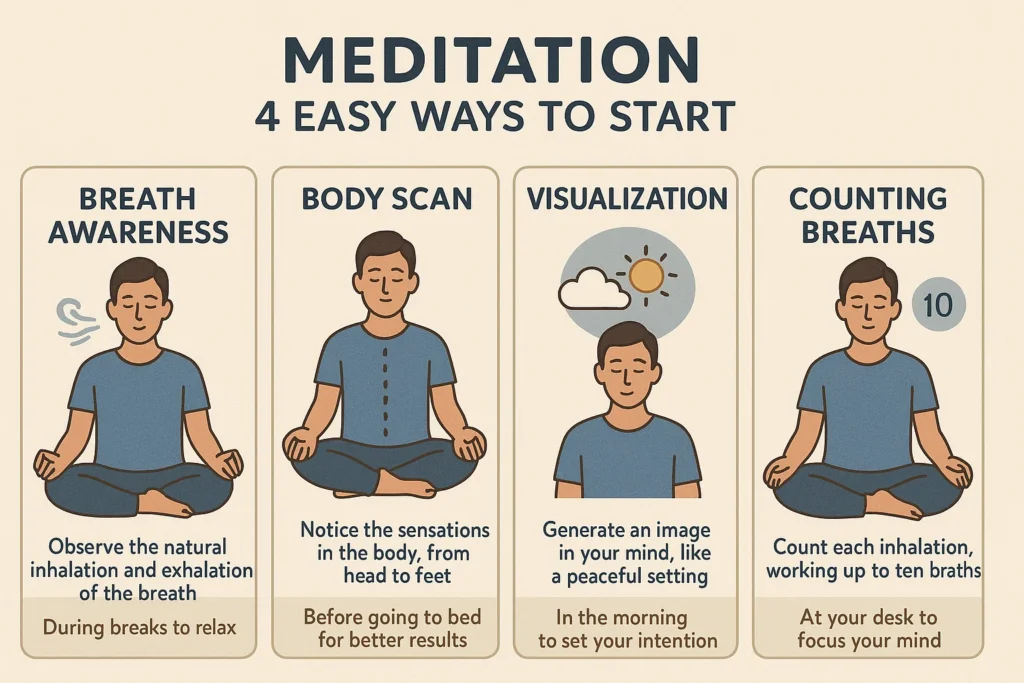Amidst constant pinging of notifications, rigid deadlines that have to be met every now and then and the resultant cognitive overload, people are continuously looking for a simple, effective method to find their inner calm again. That search is driving many individuals to the meditation practice which is experiencing a soaring popularity. Meditation was once reserved only for monks and mystics, but now it has become a trend realized by athletes, CEOs, students, and the general public who desire to handle stress well and live a more meaningful life.
However, the concept of meditation for beginners can be overwhelming or abstract. Where do you start? Should you sit in a specific posture and use a mantra to focus your mind? Is it acceptable that your mind may wander during the practice? This guide will not only answer all these questions but also indicate a straightforward way to start meditation for absolute beginners.

What Is Meditation, Really?
Meditation is a mental practice that is all about the development of our awareness and attention skills. The process doesn’t have anything to do with putting an end to your thought processes or reaching some mystical state of happiness. Its major focus lies in being a witness to your thoughts without the slightest objection and returning your attention whenever your mind leaves the present moment.
Unfortunately, most people think meditation is a religious ritual, but it is actually quite secular in nature for most people who practice it. Even though the practice of meditation has its inception in spiritual traditions such as Buddhism and Hinduism, meditation has currently turned into a tool used by the population for its mental wellness purposes.
There are many forms of meditation. Some common ones include:
- Mindfulness Meditation: The approach is aimed at training a person to become aware of his or her thoughts, feelings, and surrounding settings.
- Guided Meditation: A narrator or teacher is directing the meditation, to either facilitate a person’s visualization, or to engage in a breathing-related exercise.
- Body Scan Meditation: It is a method of implementing relaxation by the focused engagement of various body parts.
- Transcendental Meditation: Practitioners of the meditation method focus on their chosen word in silence to ease their minds.
They offer us all ways that allow us to become more clarity of the mind and regulate our emotions successfully. The most important thing is you find what suits you the best.
Why Meditation Is Perfect for Beginners
For newbie meditation enthusiasts, one of the most attractive aspects is that you don’t need any special equipment, location, or physical ability. Location-wise, you can choose the comfort of your sofa, a simple spot in the park, or even a quiet corner of a train while commuting.
A bunch of researches have proved that meditation brings improvements to one’s health in extensive aspects. Among the benefits of the regular practice are those that can:
- Decrease the stress level
- Increase alertness and ability to retain information
- Strengthen the emotional immune system
- Assist in coping with stress and anxiety.
- Enhance sleep quality
Furthermore, it doesn’t consume much of your time. Just 5 to 10 minutes of meditation a day can bring visible results over time.
Still not convinced? Given that plenty of world-famous sportsmen such as LeBron James and Novak Djokovic, as well as CEOs of leading companies like Salesforce and LinkedIn, speak highly of meditation, there could be nothing better for you if it works for them.

How to Start Meditating from Scratch
The first step to meditating can appear frightening, but one has to approach it carefully. Here are some instructions for meditation from beginning to end specifically for those who have never done it before:
1. Choose a Quiet Space
Locate a place where you can sit comfortably and undisturbed. It could be your bedroom, a corner of your living room or a nearby park.
2. Sit Comfortably
It is not at all necessary to sit on the floor with your legs crossed if you don’t feel comfortable doing that. Just sit on a chair, feet flat on the ground, with your back straight and relaxed. If lying is more convenient for you, you can do that instead.
3. Focus on Your Breath
Shut your eyes and bring your attention to your breath. You will feel the air moving in and out of your nose, and the chest that rises and falls.
4. Acknowledge Thoughts Without Judgment
Count on your mind to escape. Don’t take it as a sign of failure. Bring your mind back to your breath with a smile. Don’t be hard on yourself for letting your mind wander off—this is all part of the practice.
5. Set a Timer
Start with just 5 minutes. You can always increase the time to 10, 15, or 20 minutes as you become more skilled and comfortable.
Building a Daily Meditation Habit
Keeping consistency in the practice is one of the major obstacles for beginners. Forming a meditation habit on a daily basis doesn’t have to be a difficult task, especially when you apply some wise strategies.
Try Habit Stacking
Tie the practice of meditation to a habit you already have, such as brushing your teeth or making coffee. By doing so, you will find it easier to remember your practice.
Utilize an Application
Mobile applications such as Headspace, Calm, and Insight Timer are designed to offer users guided meditation, tracking features, and reminders of the practice time which are instrumental in their schedule adherence.
Maintain a Meditation Journal
Just write down your feelings before meditation and after. As you move through time, you can easily spot some trends and areas of improvement, which can be of great influence to your staying afloat.
Be Gentle With Yourself
No need to stress over doing it “right.” Just being present and practicing appreciatively is the only thing to be considered.
Errors That One May Commit As a Starter
Falling into the same trap and thus discouraging themselves is the typical thing that beginners do. Here are some of the mistakes you should avoid:
Expecting Quick Outcomes
It is said that meditation is to the mind what sports are to the body. Overnight changes might not be so easy to see, but if you keep up with the exercises, you will reap the fruits.
Aim to Get Rid of Your Thoughts
You can never silence your thoughts and that’s fine. Meditation is all about not following but observing your thoughts.
Making It Too Complex
To get started, you should not think about the need for incense, mantras, or comfortable cushions. The only thing necessary is your breath and some minutes of your time.
Best Meditation Techniques for Beginners
To give you an idea of where to start if you haven’t found the right path yet, here are some of the simplest methods that are perfect for those who are just beginning a meditation practice:
1. Breath Awareness
This is the most foundation technique and also the easiest to learn. All you have to do is watch over your breath as it goes in and out. Whenever your mind drifts away, do the same gently with it.
2. Body Scan
Just lay down and travel through your mind to go from top to bottom and see where there is any tension. This is an excellent relaxation exercise.
3. Counting Breaths
When you sleep count each breath to ten, and you will restart the process. The practice will help you stay grounded and silent the mind.
4. Guided Visualization
Picture a calm and peaceful place like a beach, a forest, or a cosy room. You can use apps to guide you through this technique.
Helpful Tools and Resources
Below is the list of recommended tools you can use to make your meditation journey less challenging:
- Apps: Headspace, Calm, Insight Timer, Simple Habit
- YouTube Channels: The Honest Guys, Great Meditation, Jason Stephenson
- Books: “Wherever You Go, There You Are” by Jon Kabat-Zinn; “The Miracle of Mindfulness” by Thich Nhat Hanh
- Podcasts: Ten Percent Happier, The Daily Meditation Podcast
These tools provide you with guided sessions, useful tips and tricks, and social support.

Final Thoughts: Why You Should Start Today
Just getting into a meditation practice as a beginner is no longer a hidden topic. It’s a short, free, and efficient practice that can match even the most hectic schedule. By getting peace of mind through less pressure, sleep, and mental presence, meditation can be a very available and free tool that enables one to live their lives painless and more aware.
Take small steps. Be tolerant. And always keep in mind that each breath is a fresh start.